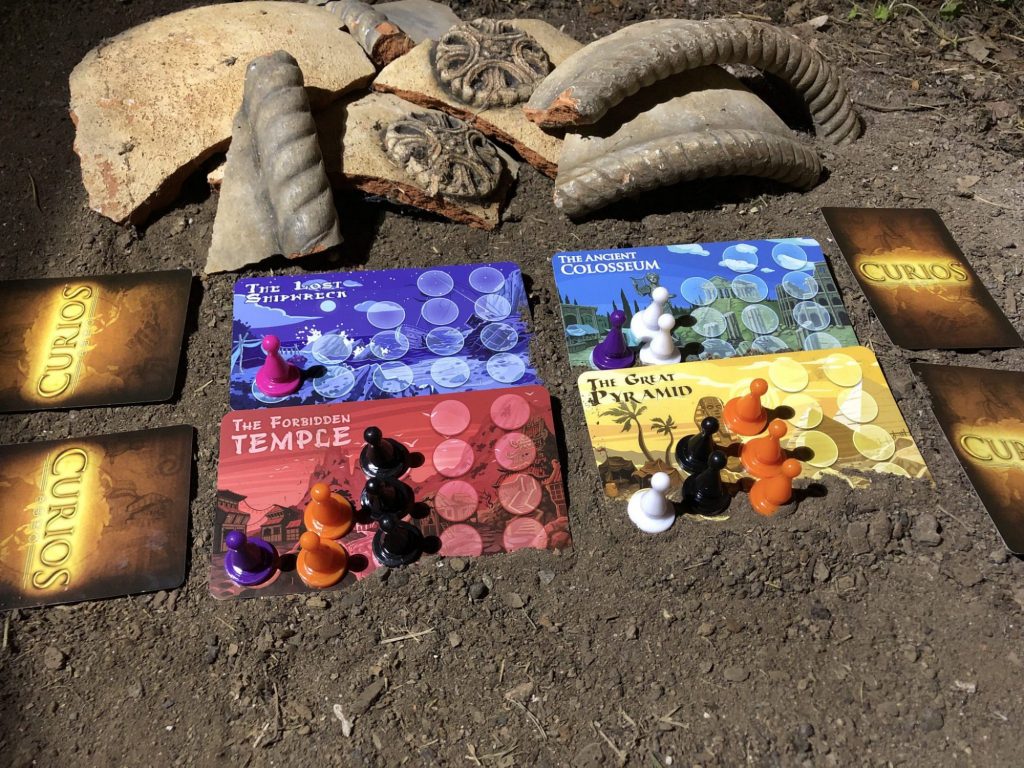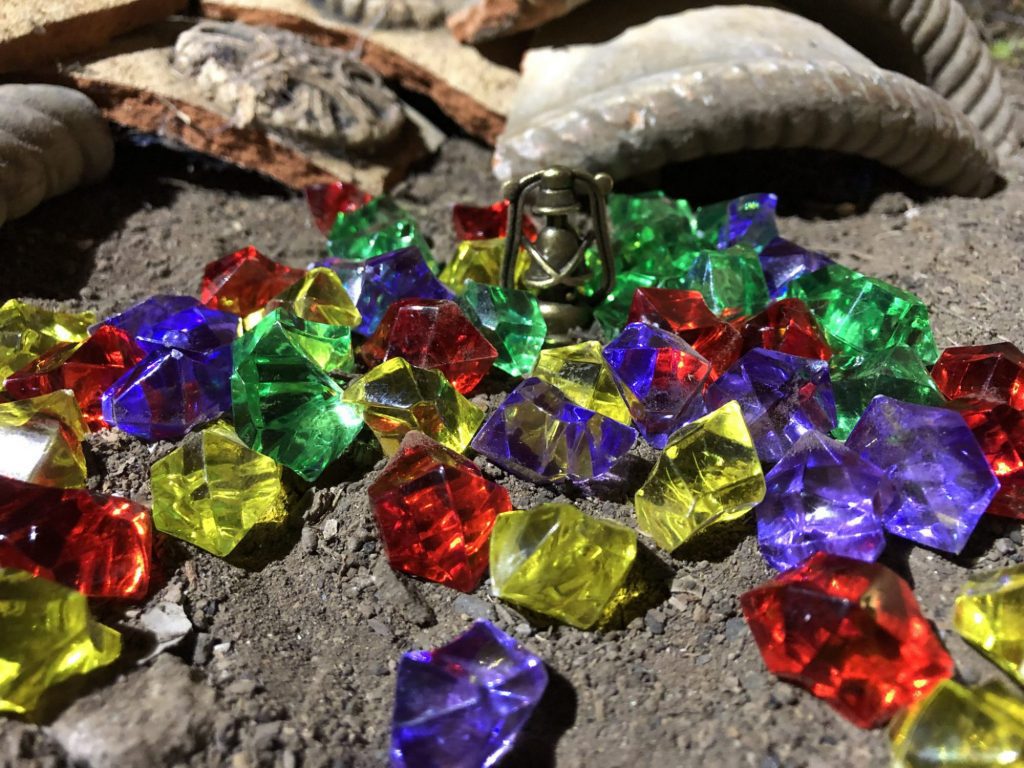Curios Game Review

Are you curious about what this game is about? Well let me provide you with my game play experience and other aspects about the game. Curio means an unusual or intriguing object. You are a rogue archaeologist searching for treasures in various different sites around the world. It's also a bit of a gamble: the way you win points can be a bit random. Now that you have an idea of what this word relates to, I will provide my game experience.
Objective
Collect as many Artifacts as possible, which are worth different amounts of points.
Rules
- In order to obtain an Artifact, you must completely fill the empty column farthest to the left. For example, if you place one of your pawns in the leftmost slot of the yellow card, you get an Artifact. Then, on your next turn, you need to place two pawns in the leftmost empty spots in order to get an Artifact.

/pic4827218.jpg)
- Every Treasure Site also has four corresponding Market Cards worth: 1, 3, 5, or 7. One of these cards is placed down at every Treasure Site each (corresponding colors of course). These face-down cards are the value of the Artifacts at each particular site. Of course, the player doesn't know this value, so it's a gamble.
/pic4827216.jpg)
- The First Player is chosen randomly.
- The yellow gems are placed with the yellow card, green with green, etc. The number of artifacts placed at each site varies with the number of players.
 |
| These are the gems or architects. |
- Then, 1 Market Card from each set of Market Cards (separated by color) is randomly chosen and placed face-down next to the corresponding Treasure Site.
- Shuffle all the remaining Market Cards and distribute them evenly among the players.
/pic4946203.jpg) - In the first stage of the game, you are hunting for Artifacts based on the earlier rules. If you don't have enough Archaeologists, you must pass.
- In the first stage of the game, you are hunting for Artifacts based on the earlier rules. If you don't have enough Archaeologists, you must pass.- Once all players are unable to go, stage 1 is over. The player with the most Archaeologist pawns at a certain site gets one extra Artifact. If there's a tie, no one gets that Artifact.
- All players retrieve their pawns.
- After this first round, there is an opportunity for players to be able to get another extra pawn. You can show everyone one of your Market Cards, thereby giving them a clue to what might be the face-down card.
- You continue this process until two or more Treasure Sites run out of Artifacts. At this point, the game ends with that round.
- Flip over the four face-down Market Cards. These dictate the value of each Artifact with the corresponding color. Add up the values and the player with the highest total wins!
Game Mechanics
Curios is a PVP game: you want to get the highest total of anyone. Each player is allocated a certain number of pawns, which are your action points. You need to use these in order to get the Artifacts.
This is also the mechanism of worker placement: the pawns are placed in certain areas in hopes of getting certain items. You get an advantage if you reveal one of your Market Cards.
This game employs risk and reward: maybe if you're betting on a certain color to be successful, there is the possibility of getting big points at the end of the game. Although this is a PVP game, you can't directly hurt other players: you can only block them, but you need to think about yourself first. Territory control is a big game mechanism in this game.
/pic5005390.jpg)
Game Play
I saw my friends in class playing, so I was very curious of what the game was about. They explained the rules of the game to me and I started playing with them. At first I got kind of confused about how the gems were to be collected, but it didn't take long to understand competently how to play the game. At first, the game seamed easy to me, but after the first round I started noticing that it is more complex than I though it was. A lot of thinking and decision making was involved in the game. Trying to guess what might be under the cards that are flipped and trying to guess what cards the other players have. It is also important to look for a pattern of why the other members go for a certain color or which colors they are trying to avoid.
/pic4946205.jpg)
Personal Opinion
I like how the game looks, the colors, the gems look very nice, the simplicity of the layout. I like the layout because it does not take too much time to set the game in the table and there aren't a lot of small lose pieces trying not to mess up the organization of the game. The rules were easy to understand, not too complicated to explain how the game is played to someone who has never played it before. Overall, I had fun playing the game, the rounds are fast and I like games that are more fast paced, it makes the game more exciting.
/pic4946205.jpg)
Personal Opinion
I like how the game looks, the colors, the gems look very nice, the simplicity of the layout. I like the layout because it does not take too much time to set the game in the table and there aren't a lot of small lose pieces trying not to mess up the organization of the game. The rules were easy to understand, not too complicated to explain how the game is played to someone who has never played it before. Overall, I had fun playing the game, the rounds are fast and I like games that are more fast paced, it makes the game more exciting.
Comments
Post a Comment